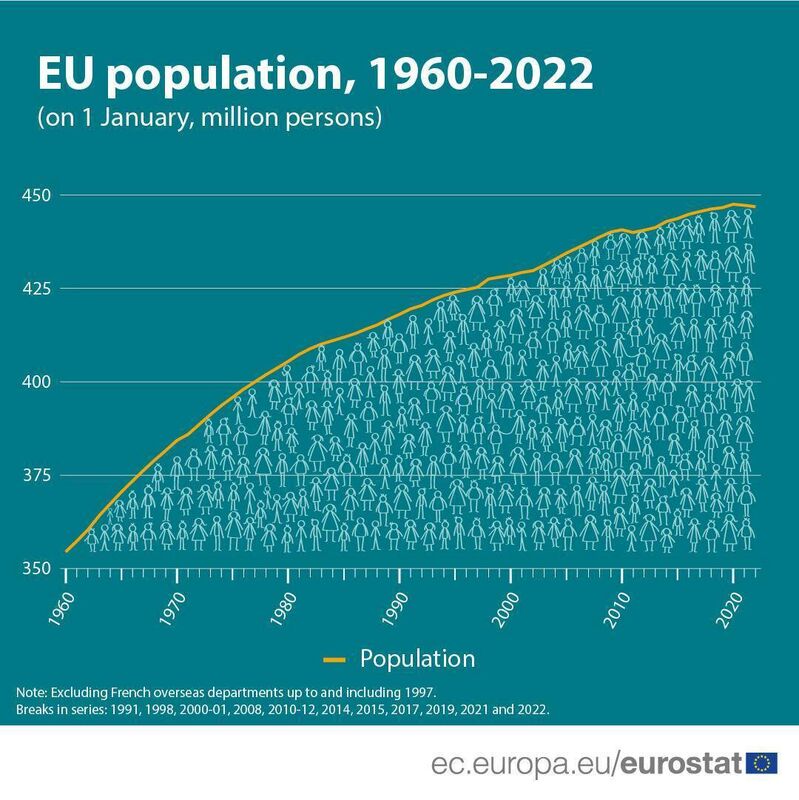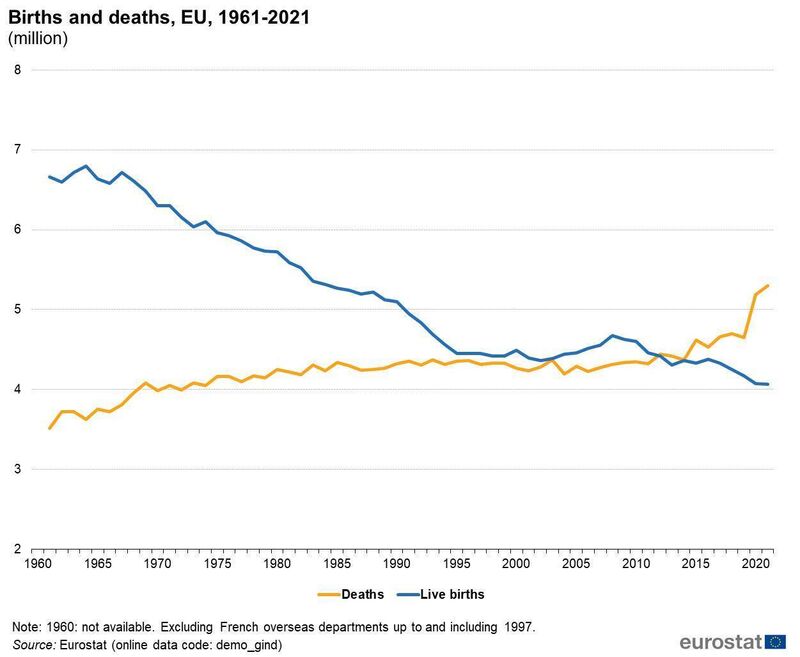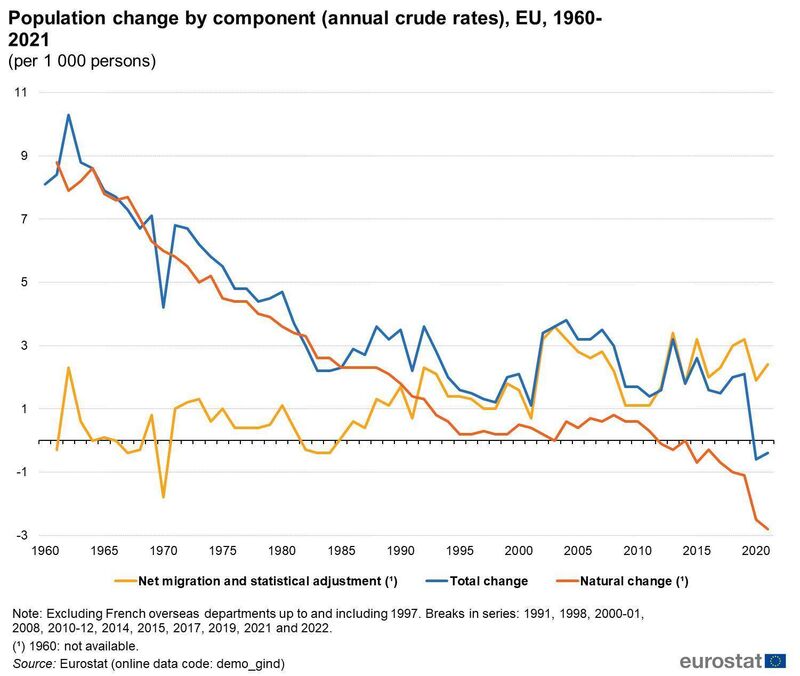EU population falls for second year running due to Covid

Covid-19 is suspected to be the main reason for the population decline. Italy saw the greatest decline with a decrease of 250,000.



Black Friday - Save 75%
SUBSCRIBEThe population of the European Union (EU) has fallen for the second year in a row — most likely due to the impact of the pandemic — a new report has found.
It said overall growth or decline in the EU’s population could depend “largely on the contribution made by net migration” as a negative natural change “could well continue” in the coming years.
After a decline in population growth in 2020 due to the Covid-19 pandemic , the EU’s population decreased again from 447m on January 1, 2021 to 446.8m on January 1, 2022.

There were more deaths than births last year which outnumbered the net migration into EU member states, a report from Eurostat said on Monday, which was world population day.
In the EU, there were more than half a million more deaths in 2020 than in 2019, compared to 113,000 more deaths in 2021 than in 2020, the report said Ireland’s population increased by 53,700 people last year, reaching a population of more than 5m people, the highest level since The Famine — a milestone which was reached at the end of 2019. Ireland had 58,400 births and 33,100 deaths last year, granting a net natural increase of 25,400. There was also a net migration of 28,300 people into the country.
Italy reported a decrease of more than 250,000 people last year, the largest seen in the EU. However, not all member states reported a decline in population, with France seeing an increase of 185,000 people.
Germany received the largest net migration of 310,000 people. However, the natural decline of the population by 230,000 dropped its annual increase to 80,000.

The report also said the EU has undergone “a period of profound demographic and societal change” in recent years and the pandemic is “expected to leave a lasting impact on the way we live and work together”.
The population of EU member states has grown from 350m in 1960, an increase of more than 90m. This rate of growth while initially strong at 3m per year in the 1960s, has slowed to just 700,000 per year between 2005-2022.
Net migration in the EU increased considerably since the mid-1980s and was the main determinant of population growth since the 1990s, Eurostat said. The number of live births decreased progressively between 1960 and 1995, while the number of deaths slowly increased.
In 2012, the total deaths in the EU surpassed births for the first time and the natural population chance has declined ever since.

However, net migration pulled population growth up, but since 2020 the net migration no longer compensated for the negative natural change in the EU and as a consequence, the total population has been decreasing.
As the number of deaths is expected to further increase amid an ageing European population and fertility rates remain low, the negative natural change “could well continue”, the report said.


CONNECT WITH US TODAY
Be the first to know the latest news and updates
Newsletter
Keep up with stories of the day with our lunchtime news wrap and important breaking news alerts.
Saturday, November 29, 2025 - 7:00 AM
Friday, November 28, 2025 - 8:00 PM
Saturday, November 29, 2025 - 7:00 AM
© Examiner Echo Group Limited